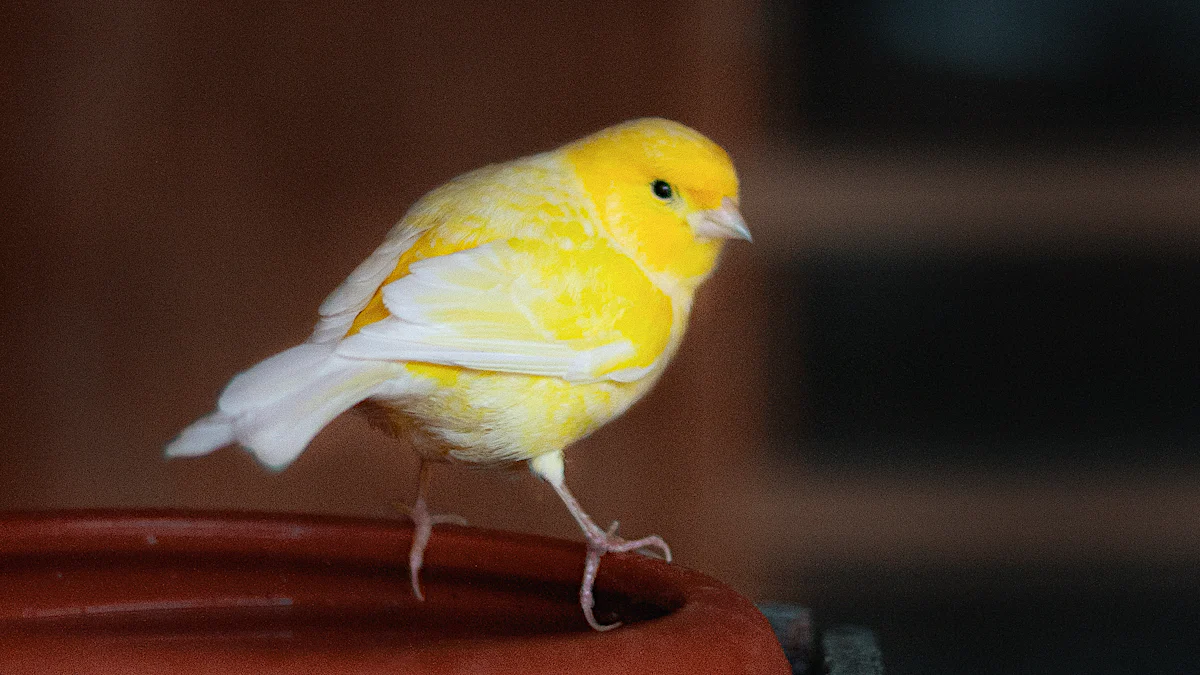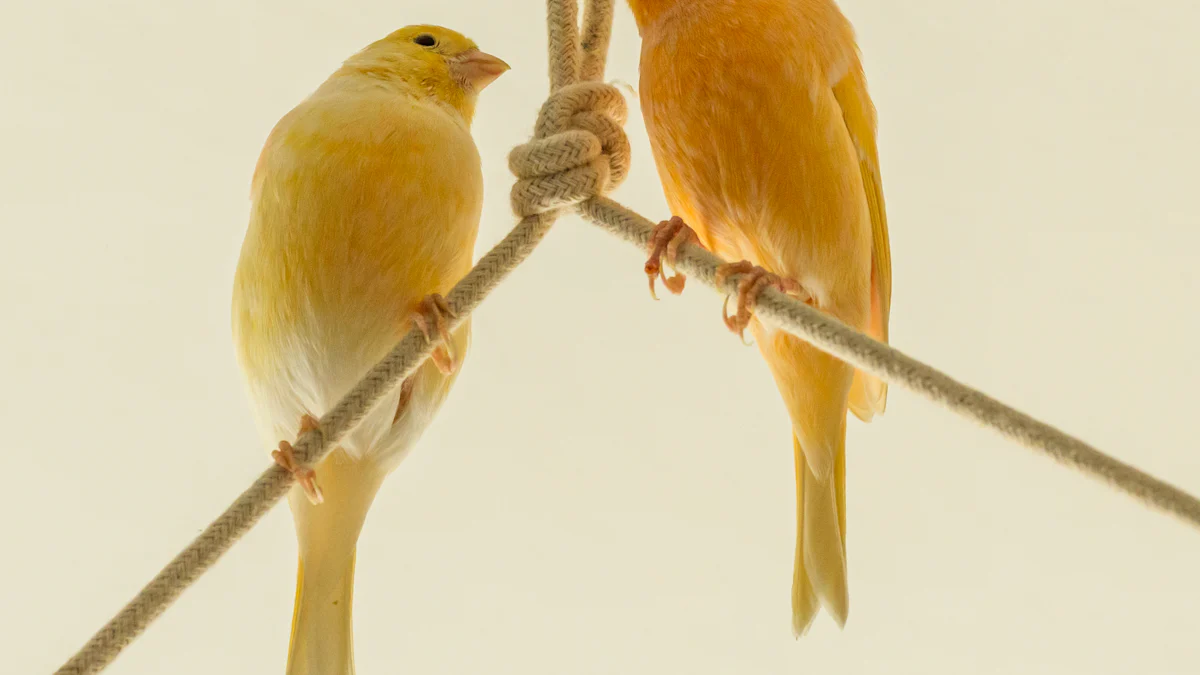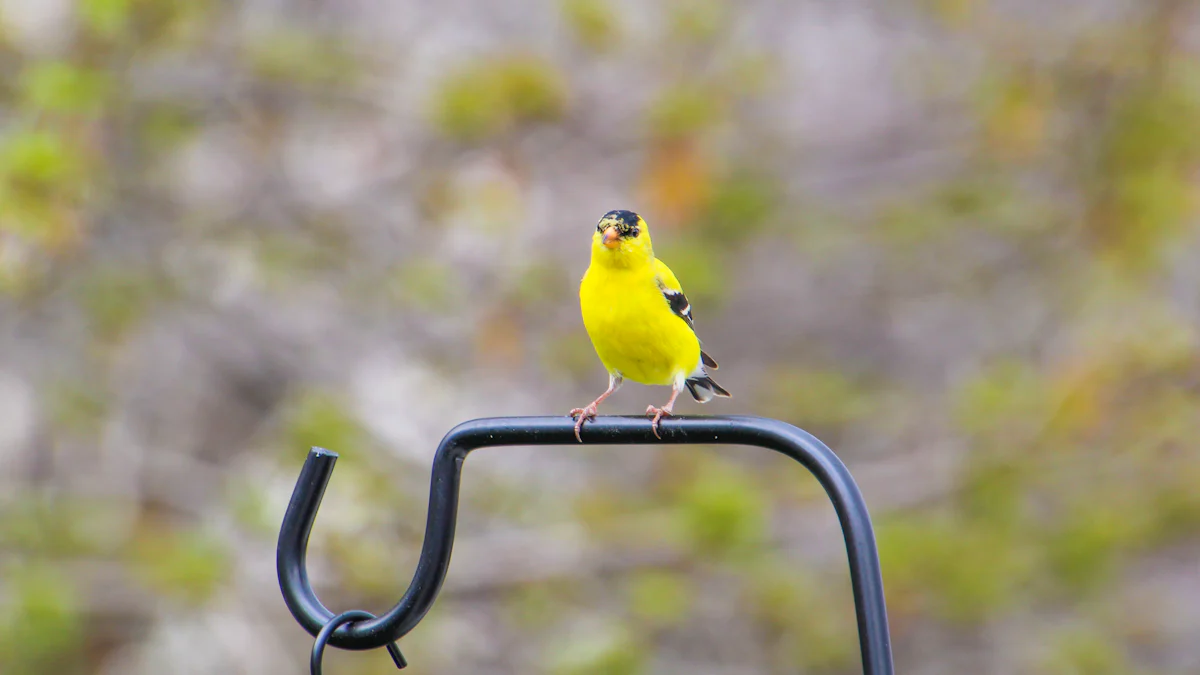
Canaries thrive on a balanced diet, but incorporating canaries dried mealworms can provide them with a healthy boost. These tiny treats are rich in protein, which is essential for feather growth and repair. During molting or breeding seasons, canaries dried mealworms can supply the extra nutrients your bird needs to stay healthy. They also offer vital vitamins like vitamin A for improved vision and vitamin D to support calcium absorption, ensuring strong bones. When introducing canaries dried mealworms, start gradually and observe your bird’s reaction. Adjust the portions based on their size, age, and activity level to achieve the best results.
Key Takeaways
- Introduce dried mealworms gradually by mixing them with familiar foods to ease your canary into the new treat.
- Enhance the appeal of mealworms by soaking them in water or using natural attractants like honey or mashed banana, but do so sparingly.
- Encourage foraging behavior by hiding mealworms in toys or scattering them in their play area, making mealtime a fun activity.
- Monitor your canary’s eating habits and adjust portions based on their age, size, and activity level to maintain a balanced diet.
- Dried mealworms are a rich source of protein and essential nutrients, especially beneficial during molting or breeding seasons.
- Always offer dried mealworms in moderation, ideally two to three times a week, to prevent dietary imbalances.
- Observe your canary’s health and behavior after introducing mealworms, adjusting your approach based on their preferences and reactions.
Practical Methods to Introduce Canaries to Dried Mealworms

Introducing canaries dried mealworms into your bird’s diet can feel tricky at first. But with a few simple strategies, you can make the process smooth and enjoyable for both you and your feathered friend. Let me share some practical methods that have worked well for me.
Mixing Mealworms with Familiar Foods
Start by blending the mealworms with foods your canary already loves. I’ve found this approach works wonders because it makes the new treat less intimidating. For example, sprinkle a small amount of dried mealworms over their favorite seeds or pellets. You can also chop the mealworms into smaller pieces if your canary seems hesitant. If your bird enjoys fresh fruits or vegetables, try mixing the mealworms with those too. This way, the familiar flavors mask the new addition, making it easier for your canary to accept.
Using Attractants to Enhance Appeal
Sometimes, canaries need a little extra encouragement. I’ve noticed that soaking dried mealworms in water softens them and makes them more appealing. The added moisture also provides hydration, which is a bonus. Another trick is to use natural attractants like a tiny bit of honey or mashed banana. Coat the mealworms lightly to enhance their smell and taste. Just be sure to use these attractants sparingly to avoid overloading your bird with sugar.
Offering Mealworms During Play or Foraging
Canaries love to explore and play, so why not turn mealtime into a fun activity? I like to scatter a few dried mealworms in their foraging area or hide them in a toy. This encourages natural foraging behavior and makes the mealworms feel like a reward. You can also hand-feed the mealworms during playtime. This builds trust and helps your canary associate the treat with positive experiences. Keep the portions small to avoid overwhelming them.
By using these methods, you’ll gradually help your canary feel comfortable with dried mealworms. Remember to stay patient and observe how they respond. Every bird is unique, so adjust your approach based on what works best for your little companion.
Factors Influencing a Canary’s Acceptance of Dried Mealworms
Every canary has its own preferences, and understanding what influences their acceptance of dried mealworms can make the process easier. I’ve noticed that factors like age, dietary history, and how the mealworms are presented play a big role. Let’s dive into these aspects to help you better understand your bird’s behavior.
Age and Dietary History
A canary’s age often determines how adventurous they are with new foods. Younger birds tend to be more curious and willing to try unfamiliar treats. Older canaries, on the other hand, may stick to what they know. If your bird has never encountered dried mealworms before, they might hesitate at first. I’ve found that patience is key here. Start small and give them time to adjust.
Dietary history also matters. Birds accustomed to a varied diet usually adapt faster to new additions. If your canary has only eaten seeds or pellets, introducing dried mealworms might take longer. In this case, I recommend mixing the mealworms with their regular food. This gradual approach helps them associate the new treat with something familiar. Over time, they’ll likely grow more comfortable.
Frequency and Presentation Techniques
How often you offer dried mealworms can influence your canary’s acceptance. I’ve learned that offering them too frequently can overwhelm your bird. Instead, I suggest starting with small portions two or three times a week. This gives your canary a chance to explore the new food without feeling pressured.
Presentation also makes a difference. Canaries are visual creatures, so how the mealworms look can affect their interest. I’ve had success soaking dried mealworms in water to soften them. This not only makes them easier to eat but also enhances their texture and appeal. Chopping the mealworms into smaller pieces can help, especially for birds that seem intimidated by their size. You can even try placing the mealworms in a brightly colored dish to catch your canary’s attention.
By considering these factors, you can create a positive experience for your canary. Remember, every bird is unique. What works for one may not work for another, so stay observant and adjust your approach as needed.
Nutritional Benefits of Dried Mealworms for Canaries

Adding dried mealworms to a canary’s diet can provide incredible nutritional benefits. These tiny treats pack a punch when it comes to supporting your bird’s health and vitality. Let me break down why they’re such a valuable addition.
High Protein Content for Energy and Growth
Protein plays a vital role in a canary’s overall well-being. I’ve noticed that canaries dried mealworms are an excellent source of high-quality protein. This protein helps with muscle development and provides the energy your bird needs to stay active. During molting or breeding seasons, canaries require even more protein to support feather regrowth and reproductive health. Offering mealworms during these times can make a noticeable difference in their energy levels and appearance. I always start with small portions to ensure my bird adjusts well.
Essential Nutrients to Complement a Balanced Diet
Dried mealworms don’t just stop at protein. They also contain essential nutrients like vitamins and minerals that complement a canary’s regular diet. For instance, vitamin A in mealworms supports eye health, while vitamin D aids calcium absorption for stronger bones. I’ve found that these nutrients fill in the gaps that seeds or pellets might miss. Including mealworms in your canary’s diet ensures they get a more rounded nutritional profile. I like to think of them as a boost to their everyday meals, especially when paired with fresh fruits or vegetables.
Moderation to Avoid Health Risks
While dried mealworms offer many benefits, moderation is key. Overfeeding can lead to imbalances in your canary’s diet. I stick to offering mealworms two to three times a week, which works well for my bird. This frequency provides the nutritional benefits without overwhelming their system. I also adjust the portion size based on my canary’s age, size, and activity level. For example, younger birds or those in active seasons might need slightly more, while older or less active birds may require less. Keeping an eye on their response helps me fine-tune the amount.
By incorporating dried mealworms thoughtfully, you can enhance your canary’s diet and overall health. Remember to observe how your bird reacts and make adjustments as needed. A little goes a long way in keeping your feathered friend happy and thriving.
Monitoring Your Canary’s Health After Introducing Dried Mealworms
Introducing new foods to your canary’s diet is exciting, but keeping an eye on their health ensures the change benefits them. I’ve learned that observing their habits and physical condition helps me make better decisions for their well-being. Let’s explore how you can monitor your bird effectively.
Observing Eating Habits and Preferences
Paying attention to how your canary reacts to dried mealworms can tell you a lot. I always start by watching how much they eat and whether they seem eager or hesitant. If your bird picks at the mealworms or ignores them, they might need more time to adjust. Mixing the mealworms with familiar foods, as mentioned earlier, can help ease this transition.
I also track how often my canary eats the mealworms. Offering them two to three times a week works well for me. This frequency prevents overfeeding and keeps the treat special. If your bird starts showing a strong preference for mealworms over their regular diet, it’s time to scale back. A balanced diet remains essential for their overall health.
Checking for Physical and Behavioral Changes
Changes in your canary’s appearance or behavior can signal how well they’re adapting to dried mealworms. I look for improvements like shinier feathers or increased energy, especially during molting or breeding seasons. Mealworms provide extra protein, which supports feather regrowth and vitality during these demanding times.
However, I also stay alert for any negative signs. If your bird seems lethargic, gains weight, or shows unusual behaviors, I reassess their diet. Overfeeding mealworms can lead to imbalances or even trigger hormonal changes if your canary isn’t in a breeding condition. According to an avian veterinarian I consulted, offering mealworms sparingly outside of breeding or molting seasons helps avoid these issues.
Regular checkups with a vet can provide additional reassurance. I make it a habit to discuss any dietary changes during visits. This way, I ensure my canary stays healthy and happy while enjoying their new treat.
By observing your canary closely and making adjustments as needed, you can confidently include dried mealworms in their diet. Remember, every bird is unique. What works for one may not work for another, so stay patient and flexible.
Dried mealworms can be a fantastic addition to your canary’s diet when introduced thoughtfully. I’ve found that starting slow and observing their reaction works best. The methods I shared make the process easier and help your bird feel comfortable with this new treat. Always keep an eye on their health and adjust portions based on their needs. A balanced diet remains essential, so use mealworms as a supplement, not a replacement. With patience and care, you’ll see your canary thrive while enjoying this nutritious snack.
FAQ
How often should I feed dried mealworms to my canary?
I recommend offering dried mealworms two to three times a week. This frequency provides enough protein and nutrients without overwhelming your bird’s diet. During molting or breeding seasons, you might slightly increase the amount, but always observe how your canary reacts. Moderation is key to keeping their diet balanced.
Should I soak dried mealworms before feeding them to my canary?
Yes, soaking dried mealworms in water can make them softer and easier for your canary to eat. I’ve noticed that soaking also adds hydration, which is especially helpful during warmer months. Just soak them for a few minutes until they’re soft, then serve them fresh to your bird.
Can dried mealworms replace my canary’s regular food?
No, dried mealworms should only act as a supplement to your canary’s main diet. Canaries need a variety of foods, including seeds, pellets, and fresh fruits or vegetables, to stay healthy. I use mealworms as an occasional treat to boost protein and nutrients, not as a replacement for their staple foods.
What’s the best way to introduce dried mealworms to a picky canary?
Start small and mix the mealworms with foods your canary already enjoys. For example, sprinkle chopped mealworms over their favorite seeds or blend them with fresh fruits. I’ve found that this gradual approach helps picky eaters feel more comfortable trying something new.
Are dried mealworms safe for young canaries?
Yes, young canaries can eat dried mealworms, but start with tiny portions. Younger birds often adapt to new foods more quickly, but their smaller size means they need less. I always chop the mealworms into smaller pieces to make them easier to eat and monitor how the bird responds.
Can dried mealworms improve my canary’s feathers?
Absolutely! Dried mealworms are rich in protein, which supports feather growth and repair. I’ve noticed shinier and healthier feathers in my canary during molting seasons when I include mealworms in their diet. Just remember to feed them in moderation for the best results.
How do I know if my canary likes dried mealworms?
Watch their behavior closely. If your canary eagerly eats the mealworms or picks them out of mixed food, they likely enjoy them. If they seem hesitant, try soaking the mealworms or mixing them with familiar foods. Patience is important, as some birds take time to adjust.
Can dried mealworms cause health issues if overfed?
Yes, overfeeding dried mealworms can lead to imbalances in your canary’s diet. Too much protein or fat might cause weight gain or other health problems. I stick to small portions two to three times a week and adjust based on my bird’s size, age, and activity level.
Do dried mealworms lose nutrients compared to live ones?
Not at all! Dried mealworms retain most of their nutrients, including protein, vitamins, and minerals. They’re a convenient and equally nutritious alternative to live mealworms. I prefer dried mealworms because they’re easier to store and handle while still benefiting my canary.
Can I hand-feed dried mealworms to my canary?
Yes, hand-feeding dried mealworms can be a great bonding activity. I’ve done this during playtime, and it helps build trust between me and my bird. Just offer a small piece and let your canary take it from your hand. It’s a fun way to introduce them to this treat!


